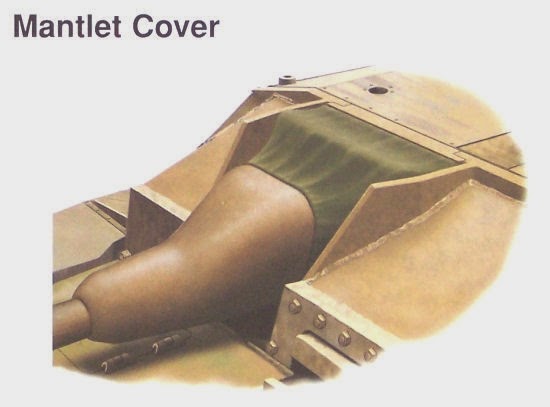Saukopf is a term invented in postwar literature. The name used in the German reports for the cast gun mantlet on the Sturmgeschütz was “Topfblende” (pot mantlet) (Tom Jentz).
Sunday, March 29, 2015
Topfblende
Later G versions from November 1943, were fitted with the
Topfblende (pot mantlet) (often erroneously called Saukopf (Pig's
head)) gun mantlet without coaxial mount. This casted mantlet with
organic shape was more effective at deflecting shots than the
original boxy mantlet armor of varying thickness between 45mm and
50mm. Lack of large castings meant that boxy mantlet was also
produced until the very end. Coaxial machine gun was added first to
boxy mantlets from June 1944, cast Topfblende from October 1944, in
the middle of "Topfblende" mantlet production. StuGs carried two MG
34 machine guns from fall of 1944. Some previously completed StuGs
with boxy mantlet had a coaxial machine gun hole drilled to
retrofit a coaxial machine gun, while Topfblende produced from Nov.
1943-October 1944, without machine gun opening could not be
tampered.
“Saukopf”
Saukopf is a term invented in postwar literature. The name used in the German reports for the cast gun mantlet on the Sturmgeschütz was “Topfblende” (pot mantlet) (Tom Jentz).
Saukopf is a term invented in postwar literature. The name used in the German reports for the cast gun mantlet on the Sturmgeschütz was “Topfblende” (pot mantlet) (Tom Jentz).
Subscribe to:
Post Comments (Atom)





No comments:
Post a Comment